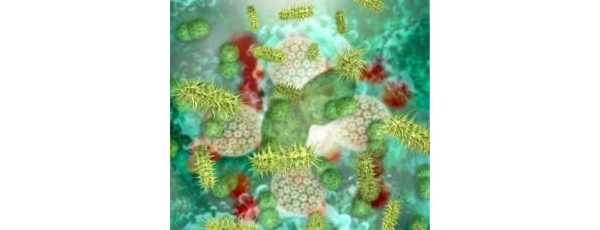Identifying Infection in Wounds: Overview and Assessment
October 21, 2015
As health care providers, we are all familiar with the signs of wound inflammation. However, it can sometimes be difficult to determine whether a wound is inflamed, undergoing the normal and expected inflammatory response to tissue injury, or infected. In this article we’ll review the definition of infection and assessment of the potentially infected wound.
What is Infection?
In order to identify infection, we first have to define it. It's important to remember that it's normal to have bacteria on the skin. These resident bacteria, or microflora, protect against pathogenic bacteria. Resident bacteria do not cause infection (except under special circumstances).
Consider the following definitions:
- Contamination: The presence of nonreplicating microbes, as in the resident microflora present on our skin.
- Colonization: Occurs when the resident microflora adhere to the surface of the body and begin to replicate, but do not affect the host's condition or cause a response.
- Critical colonization: The turning point at which the increasing number of resident bacteria becomes a wound bioburden and begins to negatively affect the host.
- Infection: Occurs when bacteria multiply and invade healthy tissues.
Infection was once strictly defined as there being 105 microbes per gram of tissue; however, it is now known that the number of bacteria present is only one factor that must be considered. Certain types of bacteria are highly detrimental to the host and should be eradicated at any number, such as beta hemolytic Streptococcus, which can cause infection at low numbers. Lastly, the host's immune function and ability to fight infection should also be considered. Individuals with diabetes are at greater risk of infection.
Identifying and Assessing Infection
Now that we understand how infection is defined, how do we recognize it? Infection can be thought of as a classic fight between good and evil, between the host's immune system and the bacteria which are trying to invade the host. This battle results in signs and symptoms that are generally fairly recognizable if one is looking for them.
When wounds are infected, the classic signs of inflammation are disproportionate to the size and extent of tissue damage. It can be difficult to tell when a wound has crossed the line between normal inflammation and abnormal infection. You should suspect infection when the cardinal signs of inflammation are exaggerated:
- Rubor (redness): an infected wound will have a poorly defined erythemal border, and redness will be obvious and disproportionate to the size and extent of the wound; there may also be proximal "streaking".
- Calor (temperature): in infected wounds, the normal localized increase in skin temperature will be increased, and the warmth will extend farther from the wound borders; there may also be a systemic increase in temperature (fever).
- Dolor (pain): wound infection often causes a very noticeable increase in the level of pain associated with the wound; in immunocompromised patients, an increase in pain may be the only sign that a wound has become infected, as the body’s ability to mount an immune response will be dampened.
- Functio Laesa (functional decline): an individual with an infected wound will often feel unwell, in addition to being unable to use the affected body part as usual; there may be fatigue or malaise, hypotension, tachycardia or other symptoms that contribute to functional decline.
Drainage from infected wounds is often higher in amount, thicker in consistency and malodorous, with drainage color that may be green, blue, yellow or white, as opposed to the normal serous or sanguineous drainage associated with uninfected wounds.
A decline in wound status can also be a sign of wound infection. For example, a wound that was previously healing in the expected fashion and suddenly plateaus, or even declines, should be closely assessed for signs and symptoms of infection.
Identifying infection in wounds is important because infection can lead to a prolonged hospital stay, sepsis, amputation or even death for individuals with comorbidities. Assessing wounds for the signs above, and reassessing wounds frequently, can help to identify infection, thus preventing further complications in wound healing.
Sources:
Meyers, B (2008). Wound Management: Principles and Practice. 2nd edition. Pearson Prentice Hall. Upper Saddle River, New Jersey. pg. 95-99.
About The Author
Laurie Swezey RN, BSN, CWOCN, CWS, FACCWS is a Certified Wound Therapist and enterostomal therapist, founder and president of WoundEducators.com, and advocate of incorporating digital and computer technology into the field of wound care.
The views and opinions expressed in this content are solely those of the contributor, and do not represent the views of WoundSource, HMP Global, its affiliates, or subsidiary companies.










